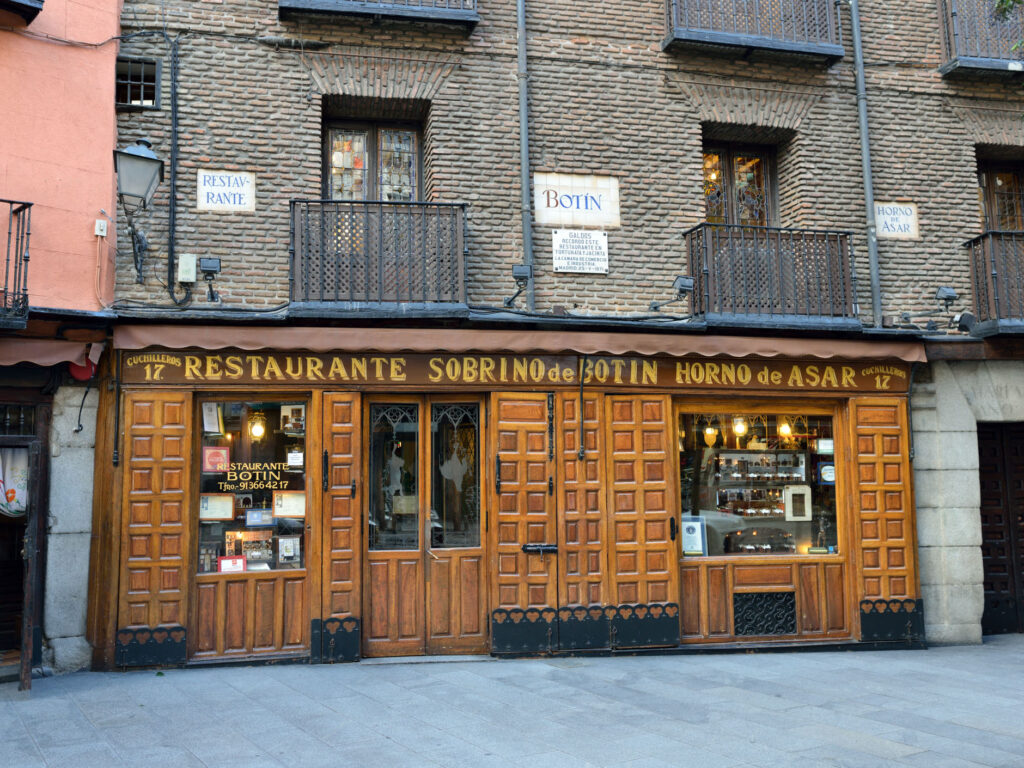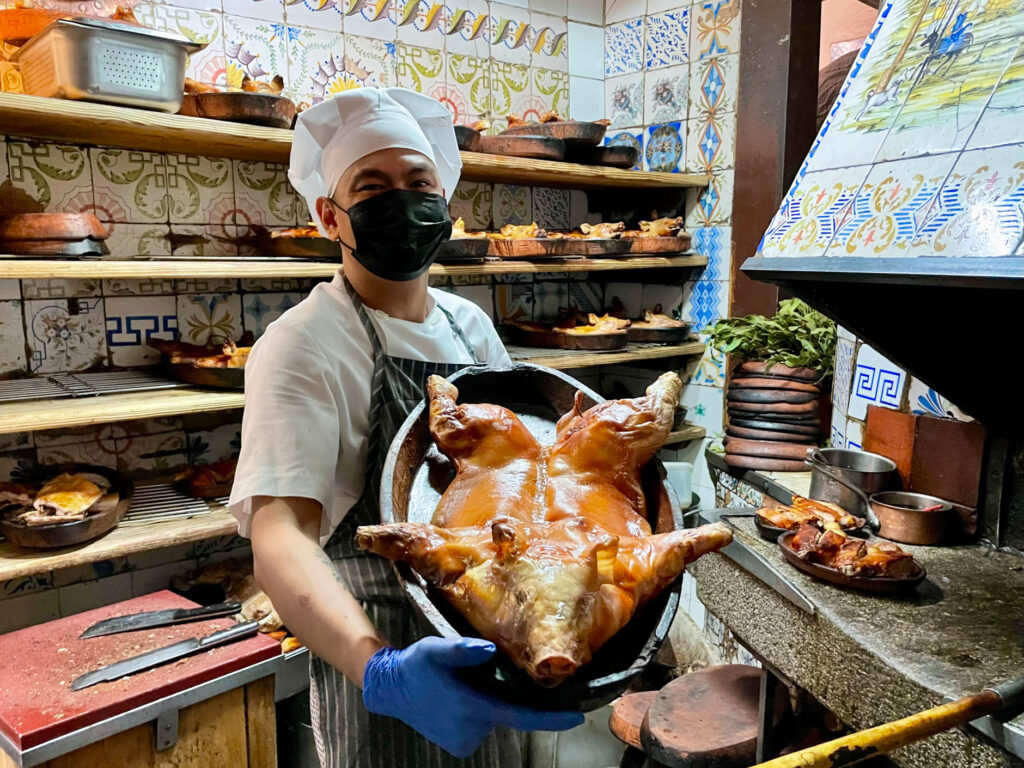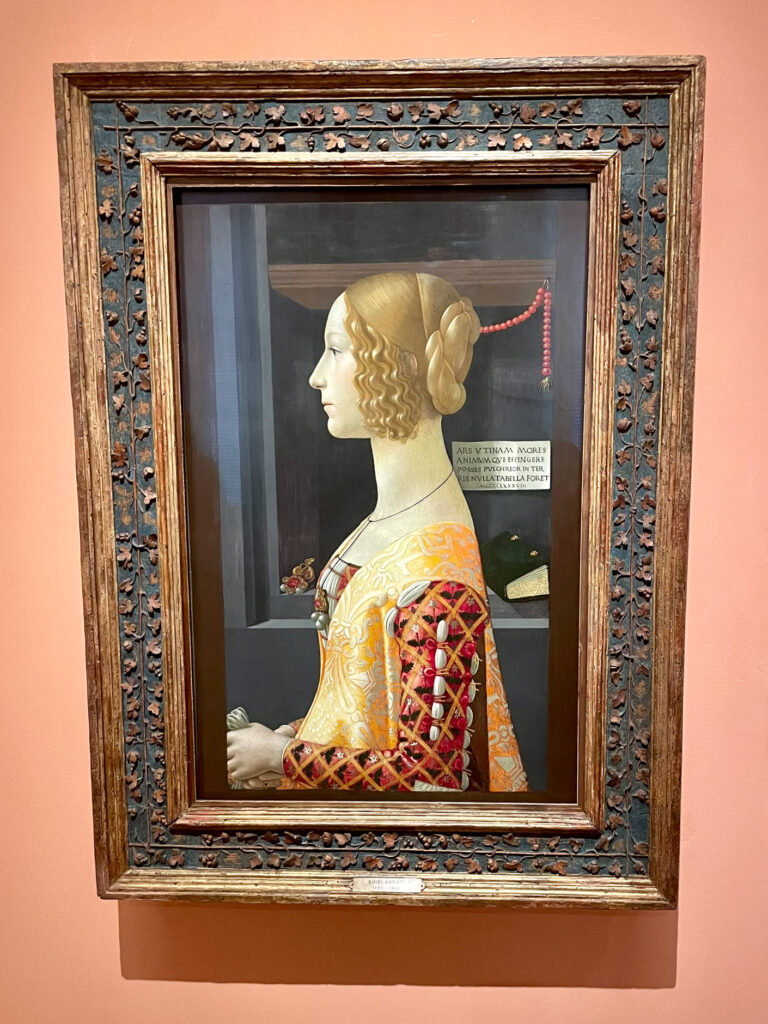Named by Hemingway ‘the most Spanish of all cities’, Madrid is an excellent choice for a city break. It’s quick and easy to get around; less than half the size of London, it has an excellent public transport system, cheap taxis and Uber. It is home to some major art collections, a huge range of bars and cafés, and both some of the oldest and the most contemporary dining destinations.
What to see
Culturally, Madrid is nothing if not convenient. The Paseo del Arte, or Art Walk, is a two kilometre stretch housing all three of Madrid’s main museums:
Museo del Prado: This showcases European masterpieces, with the emphasis on Spanish paintings from artists such as El Greco, Goya and Velázquez. Entry is free for the last two hours if you fancy a spontaneous spot of culture before drinks or dinner, but it can get busy. Alternatively, book a confirmed time slot in advance online.
Reina Sofia National Art Museum: Start in the Sabatini Building, second floor, room 205 for Picasso’s Guernica. It’s a huge canvas which makes it all the more emotionally powerful. There are no photographs permitted in this room, and what seems like most of the second floor, but you can take photos everywhere else. Other highlights include works by Dalí and Miró.
Thyssen-Bornemisza National Museum: As a fan of contemporary art, this is my favourite of the three. The website has a suggestion of must-see works and a useful set of thematic tours such as gastronomy, fashion or journeys. By all means plan your visit around them – the collection is huge, so you’ll need to be selective – but be observant as you walk between them, as you will be passing absolute gems.
There is a handy app which gives you the location, opening hours, ticket prices, nearby restaurants and a brief guide to eight key works in each museum.
Retiro Park is perfect for a leisurely stroll in the shade of the trees, or you can rent a bike nearby and cycle, but if you want to tick off some more sightseeing you can do that too. There is a boating lake, a puppet theatre and several landscaped gardens, one of which contains Madrid’s oldest tree: a Montezuma Cypress from around 1630 that was used as a cannon mount by Napoleonic soldiers. It is also home to the Velázquez Palace and the Glass Palace, which are now used as exhibition spaces. Don’t miss the Fountain of the Fallen Angel; the central figure depicts Lucifer’s fall from grace and is therefore the only public statue of Satan in the world. If you believe the guide books, it is 666 metres above sea level.
Puerta del Sol has a couple of key sights: a statue of Oso y Madrono, or the Bear and the Strawberry Tree, a symbol of Madrid and part of their coat of arms; the Kilometre 0 plaque set into the floor which marks the starting point for all of Spain’s major roads and, on top of the Casa de Correos, Madrid’s answer to Big Ben – the clock that chimes in the new year. Traditionally, you should have twelve grapes and eat one on each chime for good luck (does it count if the grapes have already been fermented?).

Mercado de San Miguel
Where to snack
All this sightseeing will be making you hungry. If you’re going to do Madrid like a Madrileño, you have to stop by Plaza Mayor for a lunchtime Bocadillo de Calamares. Expect a basic dry white bread roll, a sachet of mayo and fresh squid deep-fried in a crispy, golden heap. Don’t even try to go fancy; you need to pop into one of the bars in the tiny little alleyways off the main square like Casa Rua or Bar La Campana, pay a couple of euros, stand at the counter with the locals and order a cana (small beer) or a glass of sangria to wash it down.
Mercado de San Miguel is a popular one-stop shop for a range of fresh food and tapas. It is undeniably convenient but, for me, lacks personality and is a bit pricey. It’s probably a fabulous place to grab lunch from the office but if you are looking for authentic and delicious tapas, just walk down the side streets and see where the locals go. Start in La Latina if you can, but there are absolute finds on every corner. I’m not going to be prescriptive, with one exception: Casa Dani makes the best tortilla de españa in Madrid. Fact. From this unassuming market unit in Salamanca’s Mercado de la Paz comes the most fabulous gooey-centred tortilla with fried potato and sweet caramelised onion. Should you find yourself pressed for time and in the wrong part of town, they are available on Uber Eats; sub-optimal but still pretty damn good.
For sweet snacks and pastries, La Mallorquina is one of Madrid’s oldest and most beloved pastelerias and has all of the traditional treats, plus upstairs seating. Try Napolitanas de Chocolate, similar to a squashed, super-chocolatey pain au chocolat (in a good way) and Torrijas – basically French toast, topped with cinnamon, sugar and sometimes honey. If you’re thinking of chocolate with churros, then San Gines is the best choice.
Where to drink
Rooftop bar Azotea del Circulo on top of the Circulo de Bellas Artes has incredible views across the Madrid skyline. A few euros will get you a ticket for the exhibitions in the main building but also access to the lift with glass doors that gets you to the rooftop terrace which is watched over by a huge bronze statue of Minerva, Roman goddess of art. Alternatively, for a ten euro cover charge you can sip a G&T in a palace: Terraza Cibeles overlooks the Plaza de Cibeles and the iconic fountain.
Back to earth, La Venencia is a wonderful sherry bar straight out of Hemingway’s 1930s Madrid: dusty old bottles and barrels, vintage posters, battered furniture, tabs chalked up on the bar and a roomful of regulars. Try a mouth-puckeringly dry fino, chilled and served with a dish of fresh green olives if it’s your first drink, then maybe a nutty amontillado with cured meat or some aged Manchego. You will get a small tapa with each drink, maybe nuts or cheese, but they have a short menu of more substantial tapas. I would start with the Cantabrian anchovies. Don’t try to tip, or take photographs; socialist principles (and caution against spies) still prevail.

Casa Botin – the oldest restaurant in the world
Where to dine
Casa Botin is officially the oldest restaurant in the world, having been in continuous operation since 1725. Francisco de Goya was a waiter here, while Hemingway was a particular fan of their signature roast suckling pig and mentions Botin in several of his works, including the final scene of The Sun Also Rises. It is a cluttered, characterful rabbit warren of a place, weighty with history. We ate on the lowest floor where the exposed brickwork and arches give the (not unpleasant) impression that you are sitting in the wine vaults. They are happy to show you the wood-fired oven, as old as the restaurant, which is still used to roast the pigs with lard, onion, garlic, white wine, bay leaf and seasoning.
If you haven’t already guessed, it wouldn’t be top of my list for vegetarians; we had a pescatarian in our party and the choice was limited. They have a handful of fish and seafood dishes – the Clams Botin was particularly good – however, nearly all the vegetable sides come with Iberian ham. We ordered some without and found them underwhelming and a little bland (perhaps they hadn’t adjusted the seasoning?). I mention this, but ultimately none of it really matters. The suckling pig is outstanding. Crisp, burnished skin, butter-soft, juicy meat with a glorious sweet intensity of flavour. When I am next in Madrid, and every time after that, this charming classic will be my first stop.
In contrast El Cisne Azul is light, sleek, contemporary and specialises in delicate dishes of foraged mushrooms. Given the highly seasonal nature and inherent unpredictability of sourcing wild ingredients, the menu will be different on every visit. We just asked the manager to recommend a selection of dishes and I strongly suggest you do the same.
I’m not sure what impressed me more – the freshness and variety of the ingredients or the skill and imagination of the cookery. There is an obvious passion and respect for the produce. The natural textures and flavours of the different mushrooms really shine – nowhere more than our first course, a carpaccio of gurumelos with Parmesan, black pepper, rocket and olive oil. A parade of deliciousness followed: courgette flowers stuffed with gorgonzola and black truffle, revuelto of St George’s mushroom with octopus and asparagus, mixed mushrooms with truffle butter. Umami heaven.
We focused on the mushroom dishes as it was our only visit of the trip but there were some tempting meat-based options including flambéed lamb sweetbreads with port, duck mi-cuit with blueberry jam, and steak tartare. One word of warning: they also own a tavern with the same name further down the street that serves a more rustic menu, so be careful where your taxi drops you. To avoid confusion, there is a handwritten note outside directing you to the restaurant just a few steps away.

Suckling pig at Botin
Madrid’s Nun Cookies
Finally, if you like to include something a little quirky on your travels, how about boxed biscuits made and sold by cloistered nuns who have taken a vow of silence?
Take some cash and head to the Monasterio del Corpus Christi las Carboneras, just by the corner of Calle del Codo and Plaza del Conde de Miranda. A solid old wooden door, with an incongruous security camera, will have a sign reading ‘Venta de Dulces’ – roughly translated as ‘Sweet Things for Sale’. To the right of the door is a set of bells; you want ‘Monjas’, or ‘nuns’. Press the bell and ask, ‘¿Hola, tiene dulces hoy, por favor?” (Hello, do you have sweets today please?). If they do, you will be buzzed in.
Follow the signs marked ‘Torno’, or ‘turntable’, to the end of the hallway where there is a board in both Spanish and English listing the available flavours. Place your order, clearly stating quantity, weight (half or one kilo box) and flavour; the aforementioned turntable will move round, bringing your biscuits into view. Check your order is correct, then, leaving the biscuits on the turntable, place the cash next to them. The turntable will spin round again, with the payment taken and the biscuits all yours. Head down the hallway and back out into the vibrant city of Madrid.
This travel guide was published and last updated in July 2022.
Cover photo of Plaza Mayor and inset photo of Botin exterior licensed by Adobe. All other photos by Amanda David.









